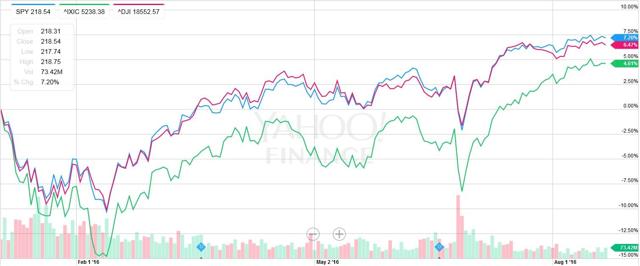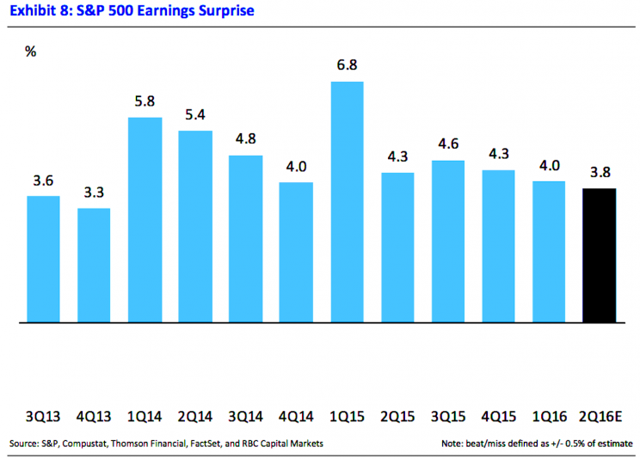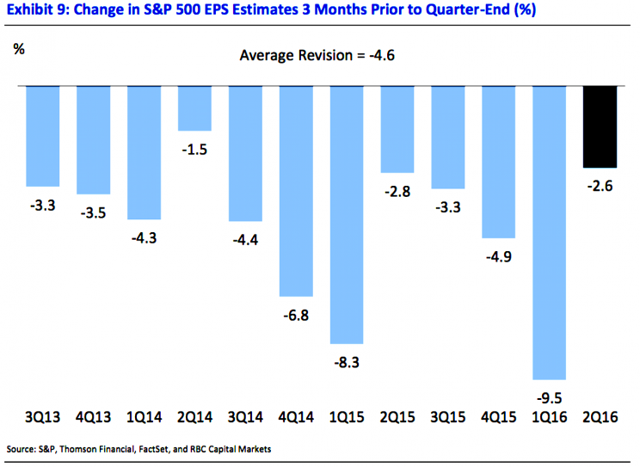Wall Street: How To Beat The Big Con

Famed research professor and criminologist Edwin H. Sutherland established the concept of “white collar crime” in his 1937 book The Professional Thief. In his book, he established the 7 Steps to creating a con, centered around the concept of underground horse racing betting arenas controlled and operated by The Mob. This is known as The Wire Racket.
- Step 1. Pick out the sucker you want to beat – find a Prospect.
- Step 2. Establish the build-up by “the point-out” or “dropping the poke.” In “the point-out,” a passerby is established as a well-informed insider (in his example a gambling commissioner, who is actually a plant by the mob in disguise) and pointed out by “The Steerer” to the Prospect. In “dropping the poke,” the Prospect seemingly randomly comes across a valuable pocketbook of (planted) lost insider documents pertaining to the horse races.
- Step 3. Following the advice of the commissioner, or the validity of the found documents, is demonstrated to lead to success. This is known as “The Convincer.”
- Step 4. The Steerer gets the Prospect to the club.
- Step 5. Put the Prospect on “The Send.” The Prospect is allowed to make small winnings to establish confidence in his method. The club then sets the Prospect up to hit “the big one,” but the Prospect must first prove they have cash on-hand in the event that they lose for such a sizable bet. Since the Prospect is betting on a sure thing, it is simply a question of the Prospect going to the bank, withdrawing cash and arranging to make a deposit to the club.
- Step 6. Get the Prospect’s money away from him. The series of small victories give the Prospect the confidence to bet it all on for a single race, which amounts to a crushing defeat. The Steerer cannot be present when this occurs, and is conveniently absent during the big race. The loss is attributed to the Prospect’s misunderstanding of the instructions.
- Step 7. Cool the Prospect off so he doesn’t make a fuss and go to the police. The Steerer informs the Prospect that he himself has lost everything before and they will arrange for the Prospect to borrow money to make his losses back. In the meantime, the Prospect goes home to await further instructions. This may succeed in not only cooling off the Prospect, but setting him up for further losses in the future.
“The stock market is played practically the same as the wire, substituting a fake brokerage office for a fake gambling club, and buying and selling stocks instead of betting on horse races. The Prospect in this case, also, makes a natural error in buying or selling stock and thus his money is lost.” – The Professional Thief (1937), Pg. 61
Today, The Mob is just a shadow of what it once was in the early 1900’s and underground horse racing dens are small-time players. Today, The Big Con is a multi-trillion dollar industry hiding in plain sight on Wall Street.
Step 1. Pick The Prospect.
This is you and me, folks.
Step 2. Establish “The Build-Up.”
We currently have a confluence of strongly negative events: the stock market is teetering on historical levels of overvaluation based on ttm P/E ratios, the Labor Participation Rate is at its lowest levels in over 40 years, The Obama Administration will be the first in history to never establish 3% GDP growth in a single year, the population on food stamps has reached an all-time high and wage growth has been stagnant since 2008.
The general public is catching onto three big scams:
- The unemployment rate is a scam – those who dropped out of the labor force, also approaching an all-time high, are not counted in the numbers to manufacture an absurdly low unemployment figure.
- The inflation numbers are a scam – inflation rates “appear” to be near zero, but food and energy prices are not counted in that rate. Anyone who has taken a trip down the grocery store aisle or opened their electric bill knows that inflation on these items have been through the roof since 2008.
- EPS of the S&P 500 has been manufactured by aggressive share buyback programs, not due to real, organic growth. This is clear as GDP growth has been awful despite a market at all-time high valuations.
Threatened by the prospect of sizable reductions in trade commissions and maintenance fees market-wide, Wall Street “drops the poke.”
The Prospect comes across a pocketbook full of insider documents forcasting huge gains in the stock market.
| QUARTER END | AS REPORTED EPS | QUARTER END | FORWARD EPS | YOY INCREASE |
| 3/31/2016 | $21.72 | 3/31/2017 | $28.02 | 28.99% |
| 12/31/2015 | $18.70 | 12/31/2016 | $29.30 | 56.67% |
| 9/30/2015 | $23.22 | 09/30/2016 | $27.08 | 16.63% |
| 6/30/2015 | $22.80 | 6/30/2016 (95.5%) | $23.31 | 2.24% |
| % Increase | ||
| TTM EPS | $86.44 | – |
| 2016 Forward EPS | $101.41 | 17.32% |
| 2017 Forward EPS | $122.14 | 20.44% |
Wall Street makes the “point-out” – this information comes straight from the mouths of the Index Commissioners themselves.
Step 3. The Convincer
The Index Commissioner and their pocketbook of data is demonstrated to be true.
Earnings Scorecard: With 95% of the companies in the S&P 500 reporting earnings to date for Q2 2016, 71% have reported earning s above the mean estimate and 54% have reported sales above the mean estimate.
Valuation: The forward 12-month P/E ratio for the S&P 500 is 17.1. This P/E ratio is based on Thursday’s closing price (2187.02) and forward 12-month EPS estimate ($128.46).
Step 4. The Steerer Gets The Prospect To The Club
Are you reading this right now? Welcome to the club! I hope you enjoy your stay. We have a lovely high-top table available in the corner and a rotating selection of 12 local craft beers on tap. Our menu is seasonal and farm-to-table. There is no reason to go anywhere else.
Step 5. Put the Prospect On “The Send.”
A small series of victories are established.

All major indices (NYSEARCA:DIA) (NYSEARCA:SPY) (NASDAQ:QQQ) have seen significant gains YTD.
The Prospect is ensured that despite EPS being strongly negative for the past 6 quarters straight, the bull market will continue due to several factors.
- Prolonged ZIRP and potential NIRP on the horizon has made stocks the only game in town to find significant positive yield.
- Continued ZIRP and potential NIRP for years to come will continue to promote strong borrowing and keep cash pouring into the stock market, which will continue to be the only place to find significant yield.
- Strong forward P/E estimates show EPS of the S&P 500 increasing by 41.3% by the end of 2017 from current ttm values.
The Prospect is convinced to not only keep their current deposit with the house, but to drain more of their bank account and put more money into the house to grow their deposit. This is a sure thing.
Step 6. Get the Prospect’s Money Away From Him
The allure of strong future earnings and dovish policies keep the fees rolling in.
- The Prospect, once contemplating liquidating their assets and converting them into cash to hold during times of extreme market overvaluation, instead doubles down on fund contributions. This increases the net value of regular maintenance fees collected since those fees are a percentage of net asset value.
- The Prospect increases their buying frequency under the guise of a big asset value run-up. The trade commissions generated are never refunded regardless of future market performance.
Step 7. The Cool-Off
Regardless of whether or not the bull market continues, the Prospects will be back. They always come back.
Wash. Rinse. Repeat.
Wall Street: The Big Con
We as investors are all Prospects in The Big Con. The Big Con does exist, and the formula is simple:
Fund managers do not get rich on performance. They generate most of their wealth from maintenance fees and trade commissions. Wall Street depends on you, The Prospect, giving them your money, letting them hold it and continually adding and subtracting to the pot, with the end result being a net addition over the long-term.
As such, we never really see negative growth forecasted, do we?


The data from the above-referenced Yahoo Finance article is invaluable. While the S&P 500 has been routinely “beating estimates,” in the past 12 quarters, the EPS data has been revised strongly downward versus original projections every single time.
And why is this being done?
My opinion is simple – to take more of your money.
And that, ladies and gentlemen, is The Big Con. Lofty forward EPS estimates are created a year or more in advance to justify current stock market valuations and convince you, The Prospect, to give Wall Street more and more of your money to siphon off fees and commissions. Then, over time, EPS and revenue projections are slowly and quietly revised downward to make them easily beatable to promote the perception of constant market growth and prove “The Convincer.” Humans have terrible memories, and in the end, we Prospects believe the “point-out” and “the poke” – the Commissioner was right and their pocketbook full of data was correct, when in fact both are often dead wrong.
The stock market, by definition, is a con. It follows every single step perfectly.
How To Beat The Big Con
It is important to understand that the stock market as we have known it is run like a con. However, that does not mean The Big Con cannot be symbiotic. As Prospects, we can profit off The Big Con just as well as Wall Street can profit off of us. The key is to have a strategy.
There are many possible strategies a Prospect can adopt. My personal strategy is simple: dollar cost averaging over long periods of time into index funds and strong, blue chip dividend stocks.
This strategy requires a bit of faith. In order for me to be successful, the United States economy has to grow consistently over the next several decades. If the United States is unsuccessful and mirrors that of Japan since the 1980’s, my strategy will more than likely fail, or at least strongly underperform my expectations. I am betting on American ingenuity and the American entrepreneurial spirit, and betting that my generation finally wakes up and reverses the course of ushering in new leaders that are anti-Capitalism and pro-Socialism – the latter is precisely why we have seen such terrible GDP growth under the current Administration. Despite these headwinds, I am placing my money ON The United States of America, because for the past 230 years it has been the right place to put your money.
If I am correct in my bet, I profit alongside my counterparts. I get solid ~8% average growth YoY – just like every other 30-year slice of American history since the industrial revolution – and my fund managers and brokers nickel and dime me in fees over the decades so they can buy their new Ferrari’s.
There are many things we Prospects can do to maximize our returns.
- Max out your tax-advantaged accounts first. Make your maximum contributions in your 401(k)/403(b), Roth IRA and/or Traditional IRA before you put a single penny into a private, taxable brokerage account to minimize your cut to greedy Uncle Sam.
- Invest in only the highest quality funds with the lowest expense ratios and maintenance feeds. SPDR ETF’s and many very high quality dividend-oriented funds by Vanguard and other big names sport fees of <0.15%. There is no need to pay big 1-3% fees inherent to more specialized funds, and if you actually do your research, you’ll find these specialized funds rarely beat index funds over 5-10+ year horizons.
- Use only private brokerage houses that offer free dividend reinvestment. Always keep an eye on historical valuations of the stocks you want to purchase to keep buy-in points limited and commissions to a minimum.
Following the above road map is not a guarantee of success. However, throughout American history, it hasn’t failed yet. If you can’t beat The Big Con, join The Big Con. Just be smart about it and have a strategy.
Disclosure: I am/we are long SPY.
I wrote this article myself, and it expresses my own opinions. I am not receiving compensation for it (other than from Unique Finance). I have no business relationship with any company whose stock is mentioned in this article.
Additional disclosure: All information found herein, including any ideas, opinions, views, predictions, commentaries, forecasts, suggestions or stock picks, expressed or implied, are for informational, entertainment or educational purposes only and should not be construed as personal investment advice. I am not a licensed investment adviser.